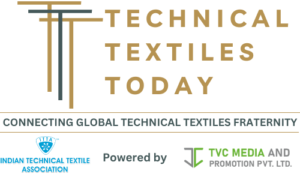What are the key challenges and opportunities in spinning yarn from recycled fibers? Uster Technologies recently convened industry leaders for a panel discussion on how modern spinning processes must evolve to meet the demands of sustainability, circularity, and consistent quality. The conversation highlighted the importance of data, automation, and collaboration across the textile value chain.
Beyond Equipment: Reinventing Processes with AI and Industry Synergy
Successfully producing quality yarn from recycled input is not just a matter of having the right machinery. It calls for a complete rethinking of traditional spinning workflows, underpinned by data analytics, machine intelligence, and enhanced connectivity. As manufacturers juggle circular production goals with profitability and customer expectations, the future of recycled yarns must be custom-built, rigorously tested, and deeply integrated.
Customization & Standards: Designing Reliability Through Innovation
Cutting-edge machinery forms the base of efficient processes, but uniqueness and product identity require bespoke innovation. “With the goal of being different and unique, we create our own path by developing our own final machines,” said Andreas Merkel, CEO of Otto Yarns. One example is the Spin-Knit system, which merges spinning and knitting into a single, seamless process. Originally built for cotton, Otto Yarns reengineered it to handle technical fibers by removing the standard top section and installing a custom drafting unit.
According to Stefan Hutter of Säntis Textiles, recycled fibers introduce challenges that differ significantly from virgin ones. He emphasized the urgent need for new standards dedicated to recycled material performance and urged Uster Technologies to spearhead this development. Hutter believes that harmonizing advanced machinery, new standards, and consistent quality assurance will be key to building trust in recycled yarns—ultimately driving consumer and market confidence.
Modifying Traditional Spinning for Recycled Input
While existing spinning equipment can process recycled fibers, adapting these systems is crucial. “Spinners must go back to the basic task and again learn how to spin, starting from scratch and going through the whole line of spinning,” said Michael Will of Rieter. This re-education is necessary due to the irregularity of recycled fibers and demands robust data collection, process validation, and continuous testing.
Additionally, customer demand for higher levels of automation presents a dilemma: how to combine flexibility with the rigidity of automated setups. Linking machines in conventional systems often limits adaptability. However, smart features—like automatically adjusting comber nip settings—could offer more versatility, especially in small-batch production.
AI and Data Integration: The Core Enablers
Artificial intelligence is now essential in sorting, cleaning, and separating recycled textile input, enabling precise material recovery and efficiency. Traceability is another growing priority, as it reinforces transparency and trust across supply chains. “For downstream processes such as dyeing, it must be possible to trust certificates,” stressed Thomas Franz of TVU.
But meaningful data insights come only through system-wide integration. By linking various machines and testing devices—ideally from multiple brands—spinners can achieve full process control and consistency. Real-time monitoring and connected operations are becoming indispensable to meet the precision required in recycling-based spinning.
Building a Connected Future Through Partnership
The panel agreed that fostering collaboration between technology developers, equipment makers, and spinners is crucial. Uster Technologies’ event provided a platform for starting those conversations and underlined the shared responsibility of shaping the sustainable future of textiles.
